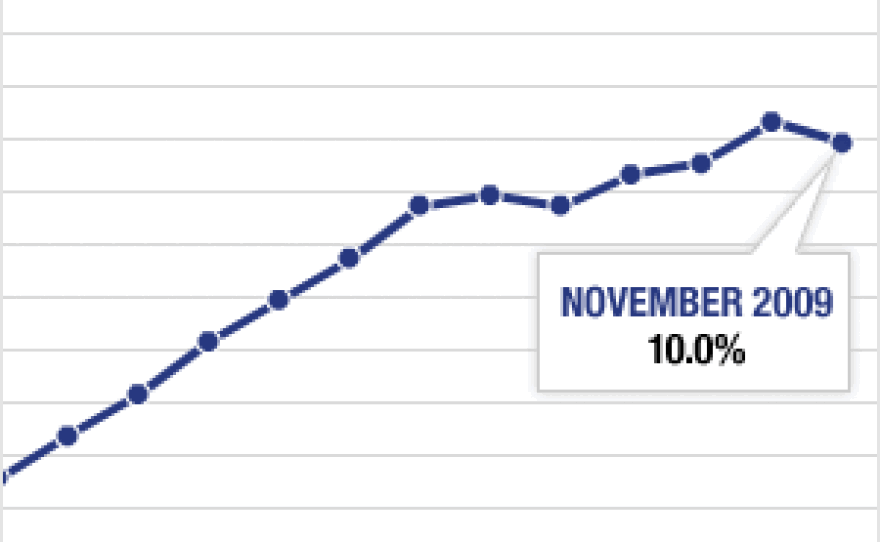Investors and economists are nervously anticipating Friday's release of new data on unemployment, but for the non-experts out there, what do those statistics really say?
The two most talked-about numbers when the Bureau of Labor Statistics releases its employment report each month are the unemployment rate and the number of jobs created or lost.
First, let's talk about the number of jobs lost or gained.
The most recent employment report showed payrolls at U.S. businesses declining by just 11,000 jobs in November of last year. But Tom Nardone of the BLS says that doesn't mean just 11,000 people lost their jobs.
Every month, there's a huge churn of millions of job losses and gains in the economy, he says. The headline number is "the net change of that," Nardone says.
During the depth of the recession last January — when the employment report showed 741,000 jobs being lost — far more people than that were being hired.
"In January, the worst month in terms of jobs loss, you had approximately 4.3 million hires going on in the economy," Nardone says.
But that number of hires was overwhelmed by the more than 5 million people who either lost their jobs or left them for other reasons. So, the number of people feeling the pain of job loss was far greater than the net of 741,000 job losses in the headline number. But millions of people were also experiencing the joy of getting a new job even in the gloom of the recession.
The unemployment rate — which was 10 percent in the most recent report — is also a less-than-definitive number.
Different groups experience it differently. Blacks and Latinos have higher unemployment rates than whites. Teens have higher rates than older workers, and education makes a big difference, Nardone says. For example, he notes that the unemployment rate for Americans with less than a high school diploma was 15 percent in November. By comparison, workers with four-year college degrees had an unemployment rate just under 5 percent.
The headline unemployment rate also doesn't capture everyone who has lost a job. Take Leslie Leigh Jividen of Akron, Ohio, who lost her job on Dec. 29, 2008.
Jividen, who had been employed by a lighting firm doing customer service and sales support, immediately began looking for another job.
"I'd never not worked," Jividen says. But, she says, "there just wasn't a lot out there."
So she stopped looking and decided to stay home with her children.
But despite the fact that she lost her job and couldn't find another one, Jividen wasn't counted as unemployed when the unemployment rate broke 10 percent last fall. And there are millions more like her: people who have lost their jobs and become too discouraged to continue looking.
These so-called discouraged workers are considered in another number BLS produces. It adds them, along with part-time workers who would like to work full time, to the total number of unemployed. When BLS added up all those numbers for November, it came up with a 17.2 percent rate of unemployment and underemployment in the United States.
Copyright 2022 NPR. To see more, visit https://www.npr.org. 9(MDAzMjM2NDYzMDEyMzc1Njk5NjAxNzY3OQ001))







